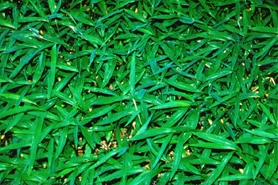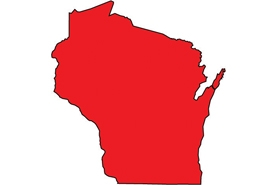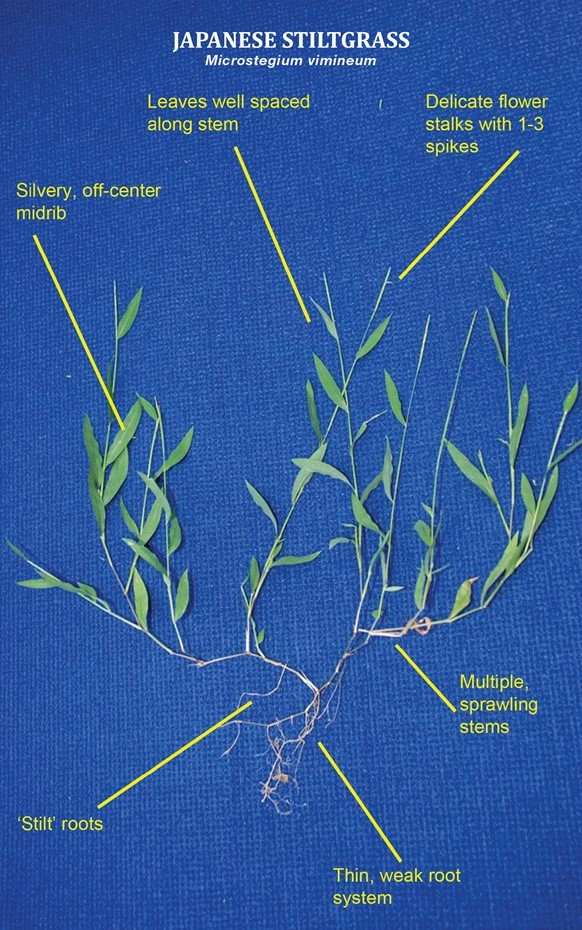Japanese stilt grass
(Microstegium vimineum)
Annual grass that is generally 1-3’ tall but will also spread mat-like. The stems are hairless and branched with upward-pointing tips. Japanese stilt grass can spread vegetatively by rooting at the nodes and seed.
Other names for this plant include:
- Common names: Nepalese browntop, Chinese packing grass, bamboo grasstific names: Eulalia viminea; M. aristulatum
Classification in Wisconsin: Prohibited
Ecological Threat
- It prefers wetlands, streambanks, ditches, mesic forests, and floodplains where its large seed bank can be spread by moving water.
- Out-competes native plants in low light conditions.
Identification
Leaves: Alternate, lance-shaped leaves that taper at both ends, are 2-3” long, and pale green with a silvery stripe down the midvein that is slightly off-center. Foliage turns purplish in the fall.
Flowers: Several 1-3” long flower spikes appear terminally or in the leaf axils. Spikelets are hairy and the flowers bloom starting in mid-September.
Fruits & seeds: Can produce up to 1,000 sources during a growing season with seeds remaining viable for 3-5 years.
Roots: Shallow fibrous roots.
Similar species: Whitegrass or Virginia cutgrass (Leersia virginica; native) lacks the silver stripe along the midrib and has flower spikes that occur in August which is earlier than stilt grass. The leaf nodes of white grass are hairy the foliage stays green into the fall. Stilt grass has non-hairy leaf nodes and the foliage turns purple in fall.
Field Guide to Japanese Stiltgrass Identification Distribution
First reported in 2020 in La Crosse county, this species is thought to still have a limited presence in the state. Visit EDDMapS to view a distribution map.
To report new populations of this species, visit the department’s invasive species reporting page.
Control
Mechanical: Can hand pull small populations or mow at peak bloom before seeds set. Prescribed burning can be effective and a butane torch works for spot treatment.
Chemical: Glyphosate or grass-specific herbicide will work; in dry areas, imazipic plus MSO can be applied pre or post-emergent.
For more information on control techniques, visit the Managing Japanese Stiltgrass in Wisconsin by the University of Wisconsin-Extension.
Resources
Sources for content:
- Czarapata, Elizabeth; Invasive Plants of the Upper Midwest: an illustrated guide to their identification and control. The University of Wisconsin Press. 2005. Pg. 141-142
Links for more information:




